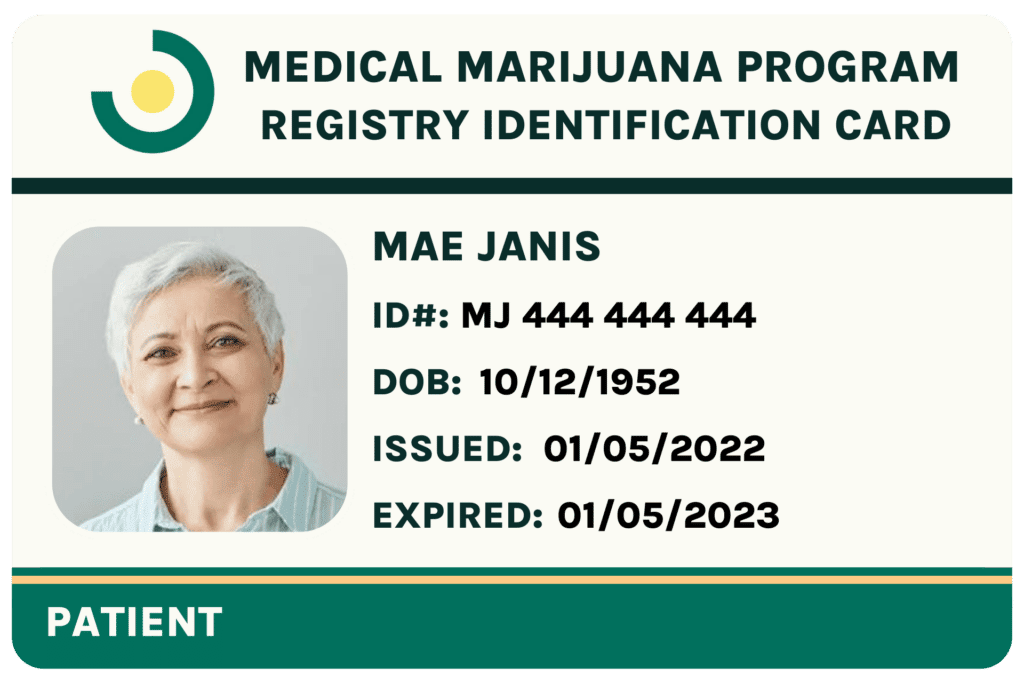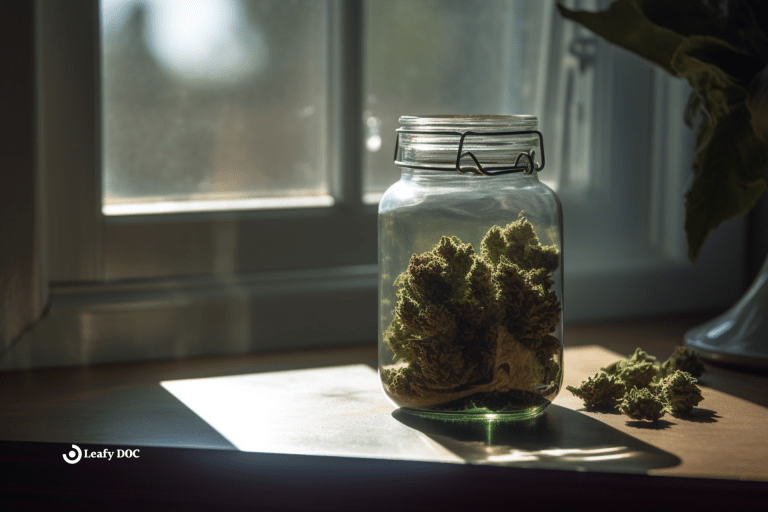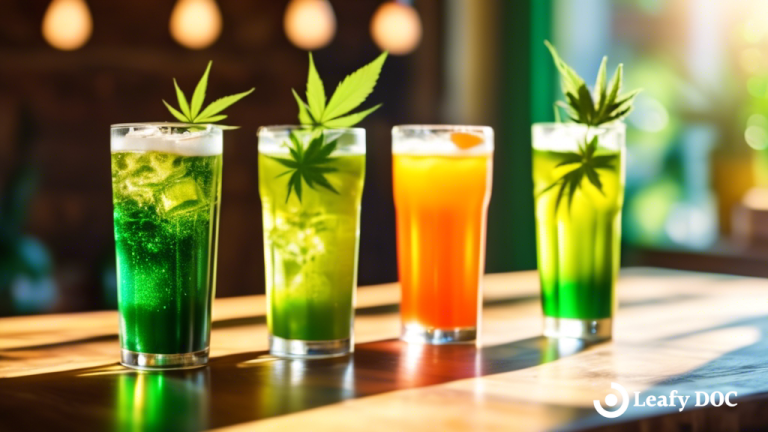Does Sativa Make You Sleepy?
by Haley Mills · October 9, 2023
Uncover the truth about sativa strains and sleepiness! Find out if sativa can really make you feel drowsy or if it’s just a myth. Click now to discover the surprising answer!

Are you curious about the effects of sativa on your sleep patterns?
Many people believe that using sativa cannabis strains can lead to feelings of alertness and energy, making it an ideal choice for daytime use. However, a common misconception is that sativa can also make you sleepy.
In this article, we will explore whether sativa has a sedating effect and delve into the factors that can influence your sleep.
Regarding cannabis, there are three main types of strains: sativa, indica, and hybrid.
Sativa strains are known for their uplifting and energizing effects, often providing users with a burst of creativity and focus. While indica strains are typically associated with relaxation and sedation, sativa strains are believed to have the opposite effect. However, the effects of cannabis can vary greatly depending on the individual and other factors such as dosage and consumption method.
In the following sections, we will examine the effects of sativa on the body and debunk common misconceptions about its impact on sleepiness.
Key Takeaways
- Sativa strains are generally energizing and uplifting, but individual tolerance, dosage, and overall health can influence their effects.
- While sativa strains are used for daytime use and to combat fatigue, some individuals may still experience sleepiness or drowsiness.
- CBD in sativa strains can help counteract sleepiness and promote balance.
- It is recommended to start with a low dose of sativa strains and experiment to find the right balance for each individual.
Understanding the Different Cannabis Strains
So, do you know the difference between sativa and indica strains of cannabis?
Sativa and indica are two different types of cannabis plants that have distinct characteristics and effects. Sativa strains are known for their uplifting and energizing effects, while indica strains are typically associated with relaxation and sedation.
But what about the myth that sativa strains can make you sleepy during the day? Let’s dive deeper into understanding the differences between sativa and indica and whether sativa is really ideal for daytime productivity.
Sativa In-Depth
Origin: Sativa plants thrive in hot, dry climates with long sunny days, such as Africa, Central America, Southeast Asia, and parts of Western Asia.
Appearance: These plants are tall and thin, growing up to 6 feet (2 meters) with narrow, finger-like leaves. Sativas typically take longer to mature than other cannabis varieties.
Cannabinoid Profile: Sativa strains often have lower levels of CBD and higher levels of THC, the psychoactive component responsible for the “high.”
Common Uses: Sativas are linked with a “mind high”—an energizing, uplifting, and often anxiety-reducing effect.
Best Time to Use: The stimulating effects make sativa a popular choice for daytime use.
Indica In-Depth
Origin: Indica plants are native to the harsh, mountainous climates of Afghanistan, India, Pakistan, and Turkey.
Appearance: Indicas are shorter and stockier with broad, chunky leaves and bushy greenery. They grow and mature more quickly than sativas and tend to produce more buds.
Cannabinoid Profile: Indica strains often contain higher levels of CBD, which is associated with relaxation, but may still have significant THC content.
Common Uses: Indicas are favored for deep relaxation, reducing nausea and pain, and increasing appetite.
Best Time to Use: Their soothing, sedating effects make them better suited for nighttime use.
Hybrid Strains
Hybrid strains are a blend of sativa and indica genetics, often cultivated to produce specific desired effects. Their appearance, cannabinoid makeup, and impact can vary widely depending on their parentage—some are indica-dominant, some sativa-dominant, and others well-balanced.
Origin: Developed on farms or in greenhouses by crossing sativa and indica plants.
Effects: Hybrids can target a range of effects, from anxiety reduction to pain relief or balanced energy.
Best Time to Use: Depends on the hybrid’s dominant characteristics.
Ruderalis: The Outlier
While less commonly discussed, cannabis ruderalis is another type, known for its small stature and rapid growth cycle. Native to regions like Eastern Europe and Siberia, ruderalis plants have low THC and relatively high CBD, but are rarely used alone due to their mild effects. Instead, they’re often bred with other strains to speed up growth cycles.
Sativa vs. Indica
While sativa and indica classifications can give a general sense of a strain’s effects, they don’t tell the full story. The chemical makeup of a cannabis strain—particularly its THC and CBD content—is a more accurate predictor of how it may affect you.
Cannabis strains are often categorized by their cannabinoid profiles into three main types:
Type I: High THC
Type II: Balanced THC and CBD
Type III: High CBD
These chemical types help explain why two strains labeled as “sativa” or “indica” can produce very different effects. For example, a high-THC sativa may feel stimulating, while a Type II hybrid with equal parts THC and CBD might feel more balanced and calming—even if it’s also sativa-dominant.
Understanding these cannabinoid categories, along with your personal tolerance and goals, can help you choose a strain that better matches your desired outcome—whether you’re looking for focus, relaxation, or therapeutic relief.
The myth that sativa strains are ideal for daytime productivity stems from the belief that they provide an energizing and uplifting high. While sativa strains can indeed enhance focus, creativity, and sociability, they may not necessarily prevent drowsiness or promote wakefulness. Each person’s reaction to cannabis is unique, and factors such as dosage, individual tolerance, and overall health can influence how a strain affects them. So, while sativa strains may work well for some individuals during the day, others may feel sleepy or unfocused.
Choosing the Right Cannabis Product for You
Selecting the right cannabis product goes beyond choosing between sativa and indica—it’s about understanding your goals, personal tolerance, and preferred method of consumption. When visiting a dispensary, don’t hesitate to talk with staff about what you’re looking to achieve. Whether it’s help with insomnia, anxiety relief, a creative boost, or a bit of daytime energy, being clear about your intentions will help guide you to the right strain or product.
If you’re new to cannabis, consider starting with “entry-level” strains. These tend to have milder effects that are easier to manage. More potent strains—especially those high in THC—can feel overwhelming for first-time users. It’s also wise to consider your medical history, especially if you’re taking any medications that could interact with cannabinoids.
Methods of Consumption
The way you consume cannabis also plays a major role in how it affects you:
- Smoking or Vaping: Effects kick in quickly but may irritate your lungs or throat. This method is best for those who want immediate relief or better control over dosage.
- Edibles (Gummies, Baked Goods, etc.): These take longer to kick in—often 30 minutes to 2 hours—but the effects are usually more intense and longer-lasting. Edibles avoid respiratory irritation, but it’s crucial to start with a low dose to avoid accidentally overdoing it.
By pairing the right strain with the right consumption method, you can shape a cannabis experience that suits your body, lifestyle, and goals.
What Are Terpenes and How Do They Influence Cannabis Effects?
When discussing cannabis, most people focus on THC and CBD, but terpenes play a major role too. These natural compounds give each cannabis strain its distinct aroma and flavor—ranging from citrusy and piney to earthy and floral.
Terpenes do more than influence scent. They work alongside cannabinoids like THC and CBD to shape how a strain affects the body and mind. For example, myrcene, a terpene also found in mangoes, may promote relaxation, while limonene, found in citrus fruits, is often linked to improved mood and mental clarity.
Each strain has a unique terpene profile that contributes to its overall effects. This means the distinction between sativa and indica isn’t based solely on THC or CBD levels—terpenes also help determine how a strain makes you feel.
Understanding terpenes can help you choose a strain that aligns better with your wellness goals or lifestyle needs.
Cannabinoids Beyond THC and CBD
While THC and CBD are the most well-known cannabinoids in cannabis, they’re just two among dozens of compounds that contribute to its overall effects. These lesser-known cannabinoids can also influence how you feel, especially when combined with terpenes in what’s known as the “entourage effect.”
Cannabinol (CBN): Known for its calming effects, CBN may help with sleep and has shown promise for easing symptoms of certain neurological conditions.
Tetrahydrocannabinolic acid (THCA): Found in raw cannabis, THCA is a non-psychoactive precursor to THC and is being studied for potential anti-inflammatory and neuroprotective benefits.
Cannabigerol (CBG): Often referred to as the “mother of all cannabinoids,” CBG has gained attention for its potential in reducing anxiety and symptoms related to PTSD, OCD, and depression.
Understanding the presence and balance of these cannabinoids in a strain can help you fine-tune your experience and choose products that align with your wellness goals.
The Effects of Sativa on the Body
When consuming sativa, it can have various effects on your body, including increased energy and mental alertness. Sativa strains are often associated with providing an uplifting and euphoric experience, making it a popular choice for daytime use.
Unlike indica strains, known for their relaxation and soothing properties, sativa strains tend to have a more stimulating effect. This can be attributed to the higher levels of THC (tetrahydrocannabinol) found in sativa strains, which is the psychoactive compound responsible for the “high” feeling.
Sativa strains are often used to combat fatigue and promote productivity, making them less likely to induce sleepiness compared to indica strains. However, individual experiences with cannabis can vary.
While sativa strains generally have a more stimulating effect, some people may still experience drowsiness or sleepiness after consuming sativa. This can be influenced by factors such as dosage, personal tolerance, and overall sensitivity to the effects of cannabis.
The presence of other cannabinoids, such as CBD (cannabidiol), can also play a role in the potential sleepiness caused by sativa. CBD is known for its calming and relaxing effects, and it can help mitigate the potential side effects of THC, including drowsiness. Therefore, consuming a sativa strain with a higher CBD content may help counteract any sleepiness and promote a more balanced experience.
Possible Side Effects and Risks of Sativa
Although sativa strains are often chosen for their energizing and uplifting effects, they can still produce unwanted side effects—especially for those sensitive to THC, the primary psychoactive compound in cannabis.
Common side effects may include dry mouth, dizziness, anxiety, or increased heart rate. In some individuals, sativa strains may even cause drowsiness, depending on factors like dosage, tolerance, and overall sensitivity.
The method of consumption also plays a role. Smoking or vaping sativa can irritate the lungs and airways, potentially leading to coughing or respiratory discomfort. In contrast, ingesting sativa-based edibles—such as gummies or baked goods—bypasses the lungs but introduces another factor: potency. When THC is digested, it converts to 11-hydroxy-THC, a more powerful compound that can lead to stronger and longer-lasting psychoactive effects. These effects may last several hours and, in rare cases, even longer.
Understanding your body’s response and starting with a low dose is key to avoiding side effects. For some users, choosing a sativa strain with a higher CBD content may help balance the intensity of THC and provide a smoother experience.
How Consumption Methods Influence Your Cannabis Experience
The way you consume cannabis can significantly affect how quickly the effects are felt and how long they last. Each method—whether it’s smoking, vaping, edibles, or sublingual oils—offers a different experience.
Smoking and Vaping
These are among the fastest-acting methods. When inhaled, cannabinoids like THC enter the bloodstream through the lungs, often producing effects within minutes. This makes smoking and vaping ideal for those seeking immediate relief or easier dose control. However, they can irritate the respiratory system, especially for individuals with lung sensitivities.
Edibles
Cannabis-infused foods and beverages—like gummies, chocolates, or baked goods—take longer to take effect, usually between 30 minutes to two hours. This delay occurs because the THC must be digested and metabolized. The result, however, is often more intense and longer-lasting than inhalation. Because of the delayed onset, it’s important to start with a low dose and wait before consuming more.
Tinctures and Sublingual Oils
These are taken under the tongue and typically begin working within 15 to 45 minutes. They offer a balanced alternative—faster onset than edibles and more discretion than smoking—making them a preferred method for many medical cannabis users.
The ideal consumption method depends on your goals, tolerance level, and how quickly you want to feel the effects. Always start with a low dose and adjust based on your individual response.
Considering Cannabis with Other Medications and Health Conditions
Before using sativa or any cannabis product, it’s important to consider how it may interact with medications or existing health conditions. Compounds like THC and CBD can alter how certain medications function, either by amplifying their effects or reducing their efficacy.
Cannabis may increase drowsiness when taken alongside sedatives, or affect the performance of blood thinners like warfarin. Individuals with heart conditions, low blood pressure, or mental health disorders should use added caution, as cannabis can influence heart rate, blood pressure, and mood stability.
If you’re taking prescription medications or managing chronic health conditions, consult your healthcare provider or pharmacist before introducing cannabis. Start with a low dose and monitor how your body responds. Keeping your medical team informed will help ensure a safe and balanced experience.
Common Misconceptions about Sativa and Sleepiness
Contrary to popular belief, sativa strains are not guaranteed to induce drowsiness. While indica strains are often associated with relaxation and sleepiness, sativa strains are known for their uplifting and energizing effects. Sativa strains are typically higher in THC, the psychoactive compound responsible for the euphoric and stimulating effects.
One common misconception is that sativa strains can make you sleepy. However, sativa strains are known for their ability to increase productivity and creativity. Sativa strains are often used daily to help users stay focused and motivated. They can provide energy and mental clarity, making them a popular choice for those looking to enhance their productivity and creativity.
Everyone’s reaction to cannabis can vary, and individual experiences may differ. Some people may find that certain sativa strains make them feel more relaxed or sleepy, while others may experience increased energy and alertness. It’s always best to start with a low dose and experiment with different strains to find what works best for your needs and preferences.
Factors that Influence the Effects of Sativa
If you want to understand the factors that influence the effects of sativa, consider various elements that can impact your energy levels.
Be sure to consider is the time of day. Sativa strains are known for their uplifting and energizing effects, which can make them a popular choice for daytime use. The stimulating properties of sativa strains can help to increase focus and productivity, making them a good option for individuals who need a boost of energy during the day. However, it’s worth noting that the effects of sativa can vary from person to person, and some individuals may find that it still makes them feel sleepy, regardless of the time of day.
A factor that can influence the effects of sativa is individual tolerance. Each person’s body chemistry is unique, which can play a role in how they respond to different strains of cannabis.
Some individuals may have a higher tolerance to the effects of sativa, meaning that they may not experience the same level of energy and focus as others. On the other hand, individuals with a lower tolerance may find that even a small amount of sativa can be overwhelming and make them feel tired. It’s important to start with a low dose and gradually increase it to find the right amount for your individual tolerance level.
Why Consumption Method Matters
How you consume cannabis significantly affects your experience:
- Smoking or Vaping: Delivers quick effects but can irritate the lungs and airways.
- Edibles (e.g., gummies, baked goods): Take longer to kick in and feel stronger, especially for beginners. They’re easier on the respiratory system but should be approached cautiously due to delayed onset.
Exploring Alternative Strains for Sleep Aid
Looking for a strain to help you sleep better? Let’s explore some alternative options.
When finding a strain that promotes sleep, indica and hybrid strains are often recommended. Indica strains are known for their relaxing and sedating effects, making them popular for those struggling with insomnia. These strains tend to have higher levels of myrcene, which is believed to have a calming effect on the body.
Hybrid strains combine the effects of both indica and sativa strains, offering a more balanced experience. They can provide relaxation and pain relief while still allowing for mental clarity, making them a good choice for those who want to wind down without feeling too sedated.
What Are Hybrid Strains?
Hybrid cannabis strains are cultivated from a mix of indica and sativa plants, often grown on farms or in greenhouses. Because they’re bred from different parent plants, the look and feel of a hybrid can vary widely—some may lean more toward the bushy, dense appearance of indica, while others show the taller, slimmer traits of sativa.
CBD and THC Ratios
Hybrids are often grown to boost THC content, but each strain will have its own unique balance of cannabinoids. This means effects can range from uplifting and energizing to calm and soothing, depending on the specific combination.
Common Effects and Uses
Farmers and growers select hybrid strains for their unique profiles. Some hybrids are chosen to help reduce anxiety and stress, while others may be preferred for easing discomfort from things like chemotherapy or chronic pain. Whether a hybrid is best for daytime or nighttime use depends on which qualities—indica or sativa—are more dominant.
Choosing Your Hybrid
You’ll often see hybrids labeled as indica-dominant, sativa-dominant, or balanced. This helps guide you toward the effects you’re after, whether it’s mellow relaxation, a creative boost, or something in between.
Another factor to consider when looking for a strain to aid with sleep is the presence of CBD. CBD, or cannabidiol, is a non-psychoactive compound found in cannabis that has been shown to have various therapeutic effects, including promoting better sleep. CBD has been found to interact with receptors in the brain that regulate sleep-wake cycles, helping to improve the quality and duration of sleep.
Therefore, strains with higher levels of CBD may benefit those who struggle with sleep issues. When choosing a strain for sleep aid, looking for indica or hybrid strains with higher CBD content may be helpful to maximize their sleep-promoting effects.
Final Words on Sativa
While Sativa strains are generally known for their uplifting and energizing effects, individual experiences can vary greatly. Factors such as dosage, personal tolerance, and the strain’s specific chemical composition can all influence the effects of Sativa on the body.
Sativa strains can still have relaxing and calming effects for some individuals, but it’s not guaranteed to induce sleepiness. If you’re specifically looking for a strain to help with sleep, it may be more beneficial to explore alternative strains known for their sedative properties, such as Indica or certain hybrid strains. Consulting with a knowledgeable budtender or cannabis professional can also provide guidance in selecting the right strain for your specific needs.
Last Updated: June 17, 2025
Get Approved for Your Medical Marijuana Card in Minutes!

Get Your Medical Card
Connect with a licensed physician online in minutes

Like This Article?
Share with your friends
Table of Contents
Keep Reading
-
How Much Does Medical Marijuana Cost?
Discover the shocking truth about medical marijuana prices and find out how much does medical marijuana really cost. Click here to uncover the surprising costs and make an informed decision about this revolutionary treatment.
-
Consult A Medical Marijuana Doctor Online
Unlock the benefits of medical marijuana with a click! Consult an expert online and discover the convenience of alternative medicine from home. Don’t miss out, book your appointment with a medical marijuana doctor today.
-
Refreshing Cannabis-infused Beverage Recipes To Try
Indulge in a selection of refreshing cannabis-infused beverage recipes for an elevated experience. Try these delicious drinks today and treat yourself to a rejuvenating sip of relaxation!



